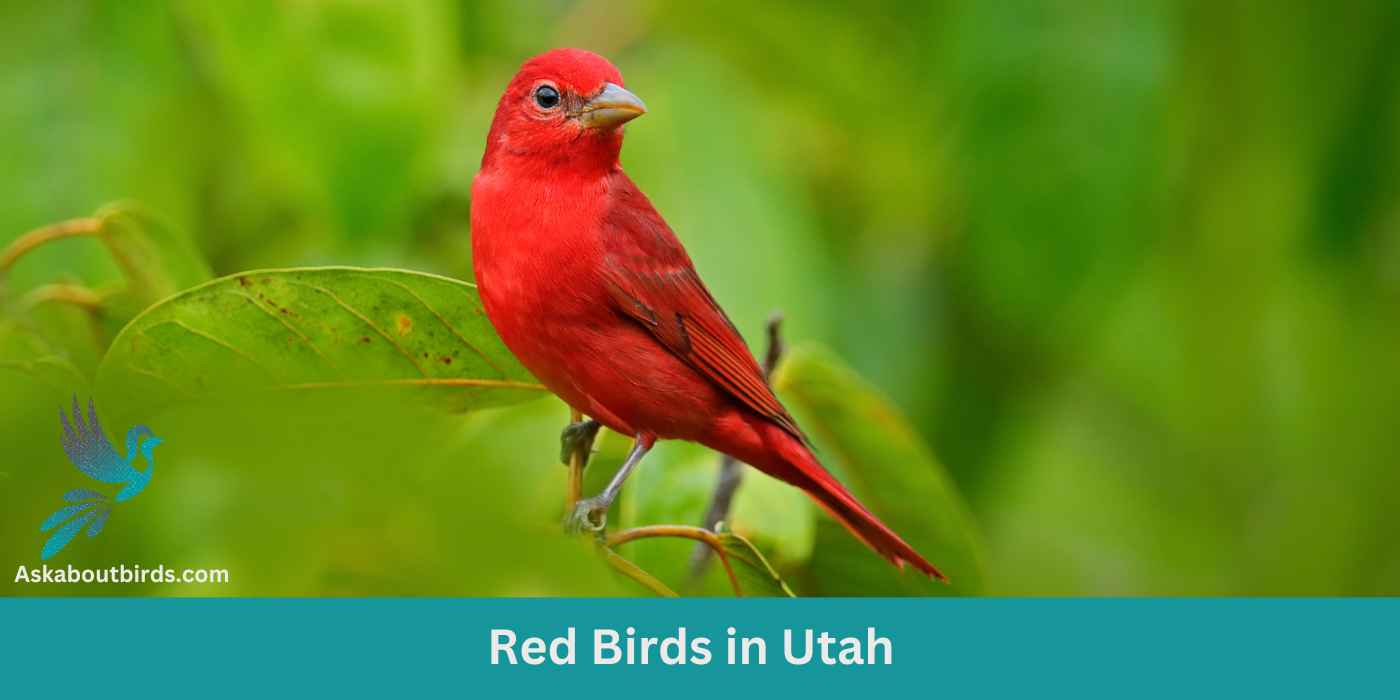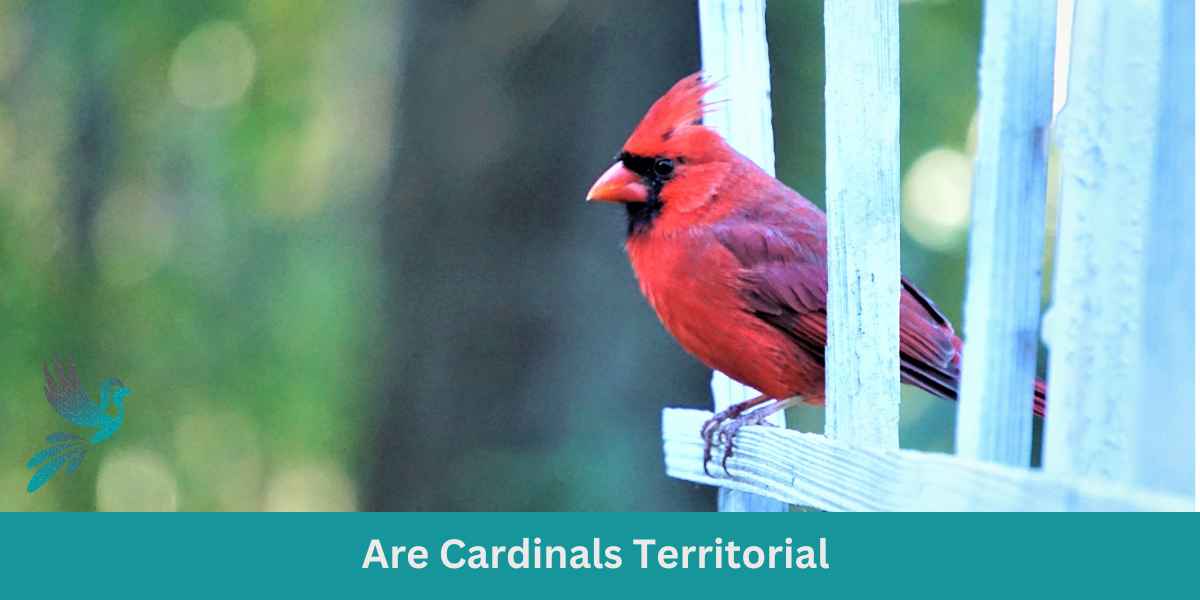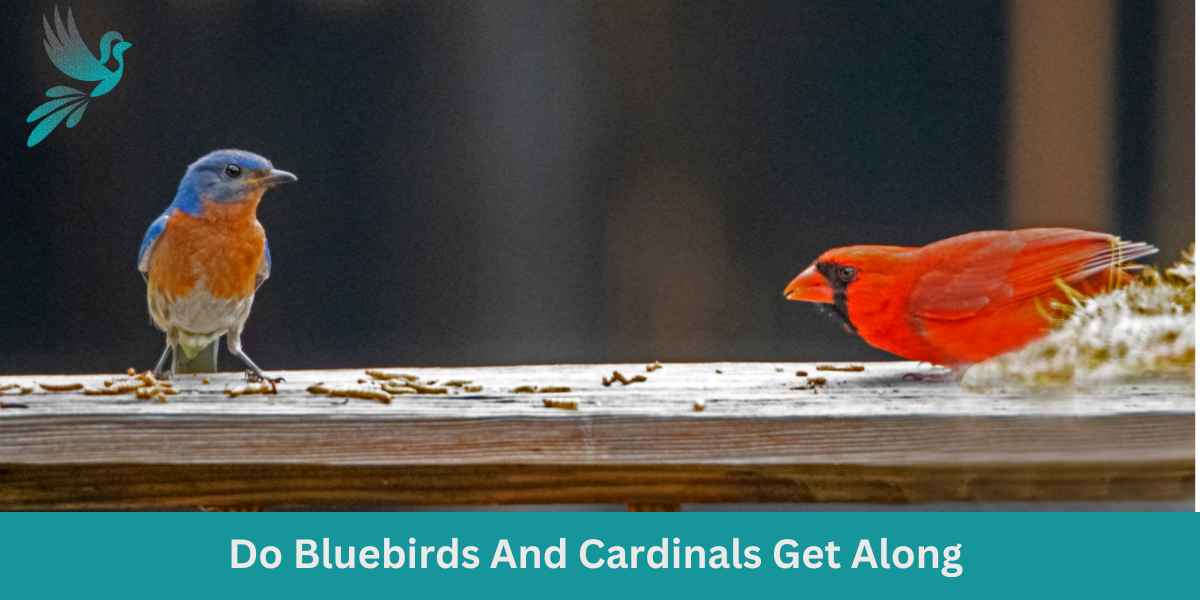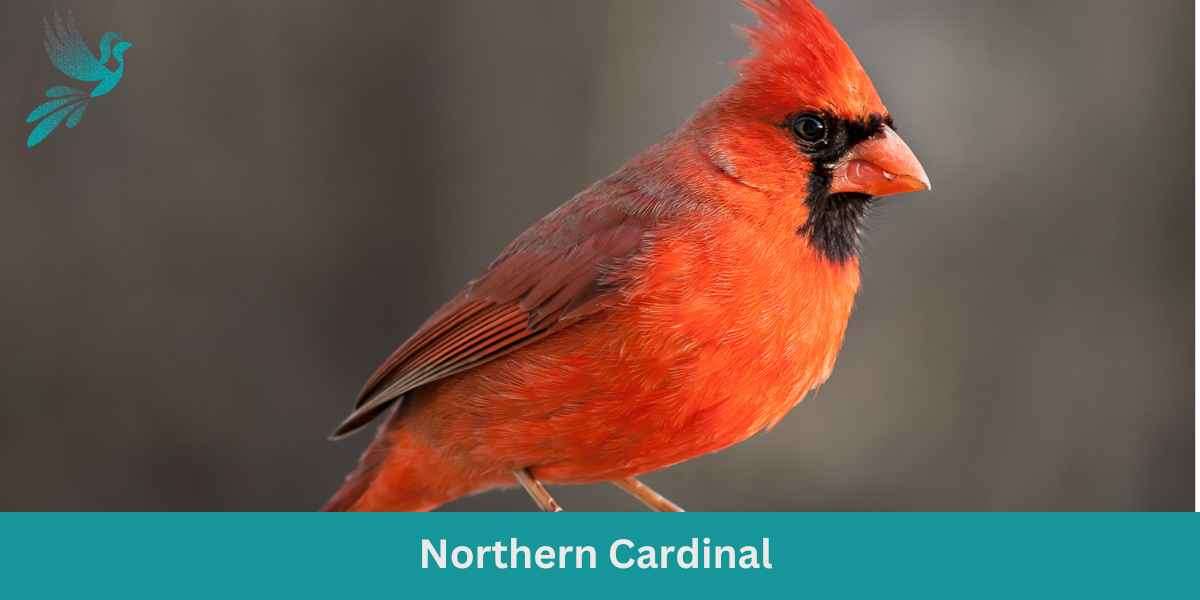From the arid deserts to the snow-capped mountain ranges, Utah’s diverse landscapes play host to a vibrant array of bird species. Among them are 12 remarkable, rare red birds here, each painting the skies and woodlands with splashes of color.
Dive into this comprehensive guide and unveil the beauty of these feathered marvels, all accompanied by striking photos to bring your bird-watching experience to life
Red Birds Found In Utah
Nestled in the heart of the American West, Utah’s vast and varied landscapes provide a haven for numerous bird species.
Its geography, ranging from the arid Great Basin to the alpine meadows of the Uinta Mountains and the fertile wetlands of the Great Salt Lake, offers diverse habitats that cater to different avian communities.
These ecological niches, combined with migratory pathways crisscrossing the state, contribute to Utah’s rich bird diversity, making it a birder’s paradise throughout the seasons.
Western Tanager
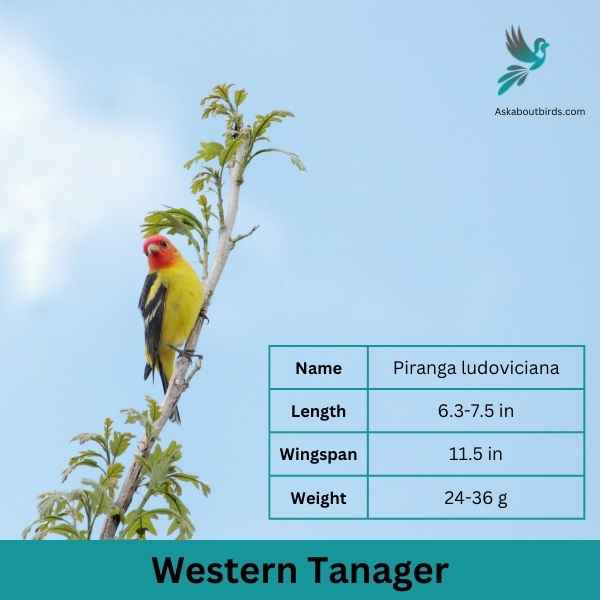
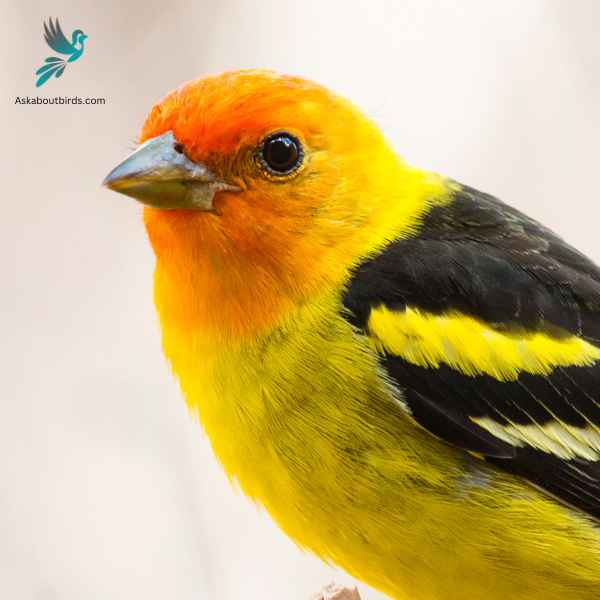
| Feature | Measurement |
|---|---|
| Scientific Name | Piranga ludoviciana |
| Length | 6.3-7.5 in |
| Wingspan | 11.5 in |
| Weight | 24-36 g |
The Western Tanager is a vibrant songbird that graces the forests and woodlands of the western regions of North America, enchanting observers with its colorful plumage and melodious song.
Appearance: The male Western Tanager is renowned for its bright yellow body contrasted with a striking red head and black wings and tail. The females are more subdued in hue, primarily being yellow with grayish wings and back, and lacking the brilliant red head of the males.
Diet: Western Tanagers primarily feed on insects, especially when breeding, but they also incorporate a significant amount of fruits and berries into their diet, especially during migration and winter.
Reproduction: Western Tanagers build their nests high in coniferous trees, often well concealed from potential predators. The female usually lays a clutch of 3 to 5 eggs and takes the primary role in incubation, while both parents are involved in feeding the chicks after they hatch.
Summer Tanager
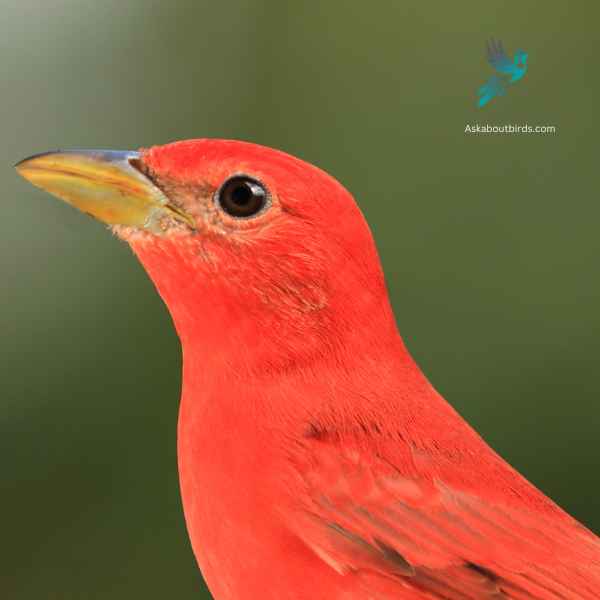
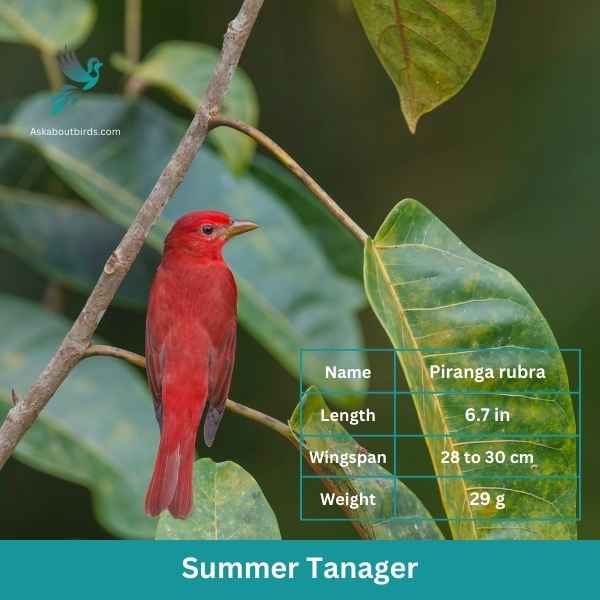
| Feature | Measurement |
|---|---|
| Scientific Name | Piranga rubra |
| Length | 6.7 in |
| Wingspan | 28 to 30 cm |
| Weight | 29 g |
The Summer Tanager is a medium-sized songbird admired for its radiant plumage and melodious song.
Appearance: Male Summer Tanagers are an impressive bright red, while females and juveniles present a softer, yellow-orange color. Both genders have a large, slightly hooked bill and relatively short tail.
Diet: Summer Tanagers primarily feed on insects, including bees and wasps, which they catch in flight or pick off vegetation. They are also known to eat fruits and berries, making them helpful in controlling pest populations and seed dispersal.
Reproduction: The female Summer Tanager builds a loose, shallow cup-shaped nest out of twigs and grass, usually hidden in the foliage of trees. The female typically lays 3-5 eggs, which she will incubate for about two weeks.
Northern Cardinal
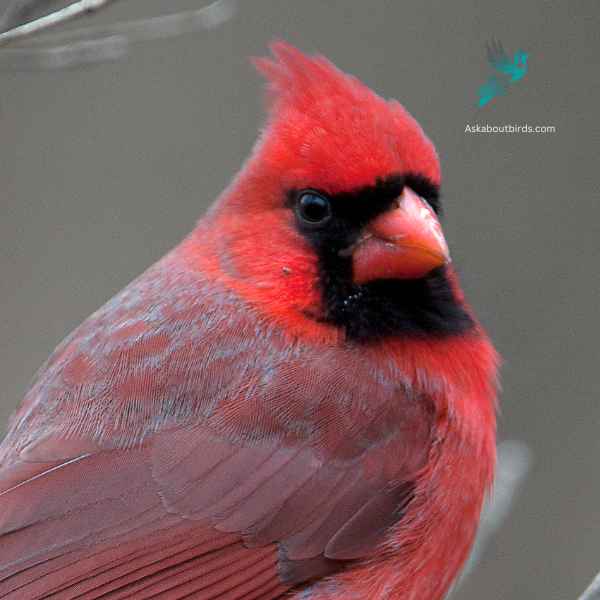
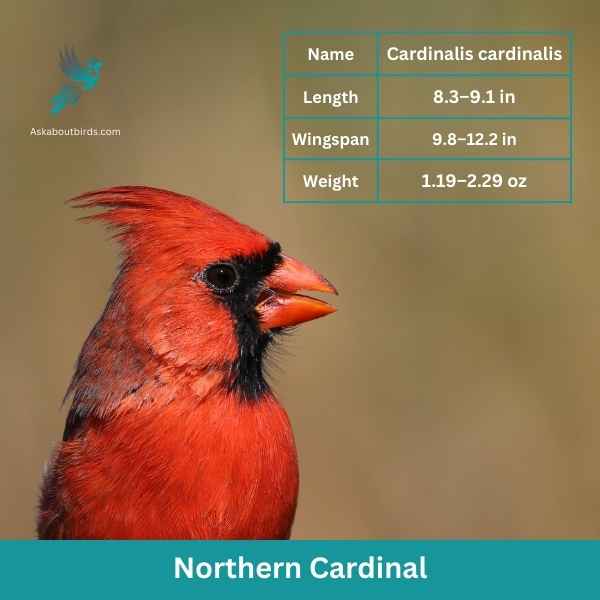
| Feature | Measurement |
|---|---|
| Scientific Name | Cardinalis cardinalis |
| Length | 8.3 – 9.1 in |
| Wingspan | 9.8 – 12.2 in |
| Weight | 1.19 – 2.29 oz |
The Northern Cardinal is an iconic North American bird, easily recognized by its vibrant color and melodious song.
Appearance: Male Northern Cardinals are a brilliant scarlet red, while females display a more subdued reddish olive. Both sexes have a distinctive black ‘mask’ on their face around the bill and a pointed crest on their head. The bird’s beak is robust, cone-shaped, and bright orange in color.
Diet: Northern Cardinals are primarily granivorous, with a diet largely consisting of seeds and grains. They also eat fruits and insects. These birds typically feed off the ground and are frequent visitors to bird feeders.
Reproduction: Northern Cardinals are monogamous, and a pair will breed together for life. The female typically builds a well-hidden nest in a dense thicket or shrub. She lays 2-5 eggs per clutch, which she incubates for around two weeks.
Vermilion Flycatcher
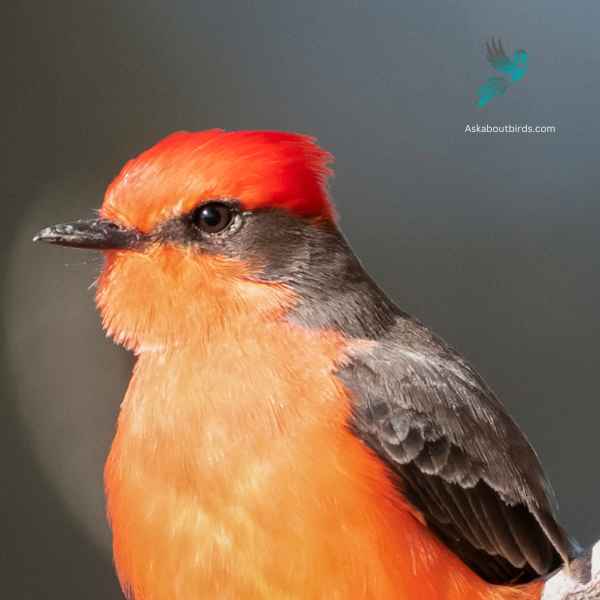
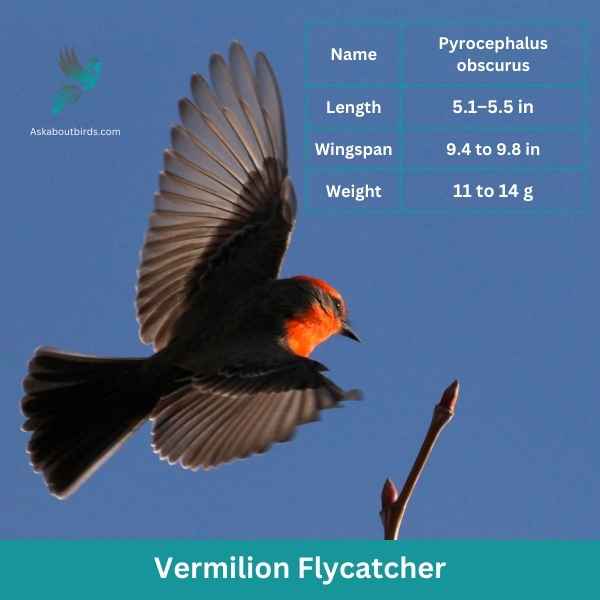
| Feature | Measurement |
|---|---|
| Scientific Name | Pyrocephalus obscurus |
| Length | 5.1–5.5 in |
| Wingspan | 9.4 to 9.8 in |
| Weight | 11 to 14 g |
The Vermilion Flycatcher is a small and colorful bird native to the Americas. The male Vermilion Flycatcher is a striking sight, displaying a vibrant red plumage on its head, breast, and underparts, contrasting with its brown wings and black tail below. Females, on the other hand, have more muted colors, featuring a pale yellowish belly and grayish-brown upperparts.
Vermilion Flycatchers are known for their lively and acrobatic flight displays, which they perform during courtship or to defend their territories. They often sing a series of soft, whistled notes while engaged in these aerial displays. They construct cup-shaped nests, usually in shrubs or low trees, where females lay their eggs and raise their young.
House Finch
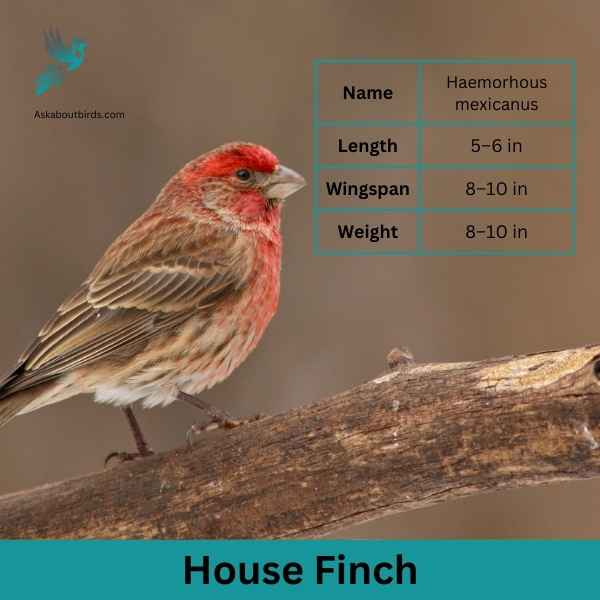
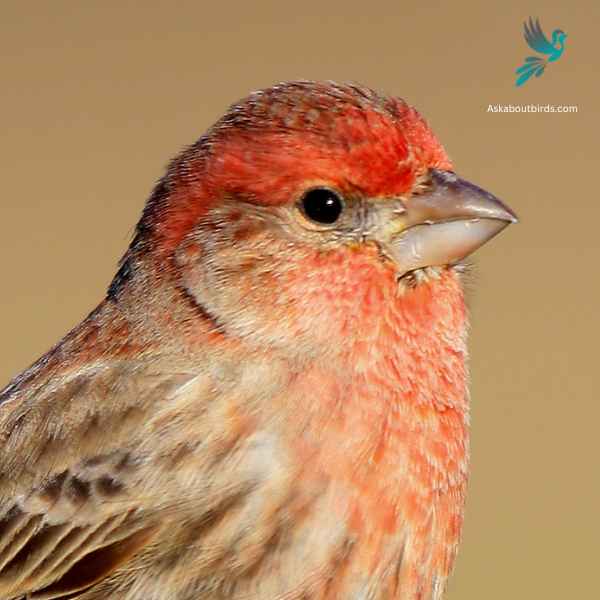
| Feature | Measurement |
|---|---|
| Scientific Name | Haemorhous mexicanus |
| Length | 5–6 in |
| Wingspan | 8–10 in |
| Weight | 0.6–0.9 oz |
The House Finch is a small songbird widely distributed across North America and is commonly found in urban and suburban areas.
Appearance: Males of this species are brightly colored with crimson faces and throats, which can extend to the chest and back, while their flanks have streaks. The female is streaked brown and lacks the red coloring. Both have a square-tipped tail and a distinctively long, flat-topped bill.
Diet: House Finches primarily eat seeds, grains, and berries. They have a particular fondness for sunflower seeds and can be commonly seen at bird feeders. Occasionally, they will also consume insects, especially during the breeding season.
Reproduction: House Finches are cavity-nesters and might choose ledges, vents, ledges, and other urban settings. They might also utilize trees or shrubs. Their nests can be made of a wide array of materials, from feathers to twigs.
Cassin’s Finch
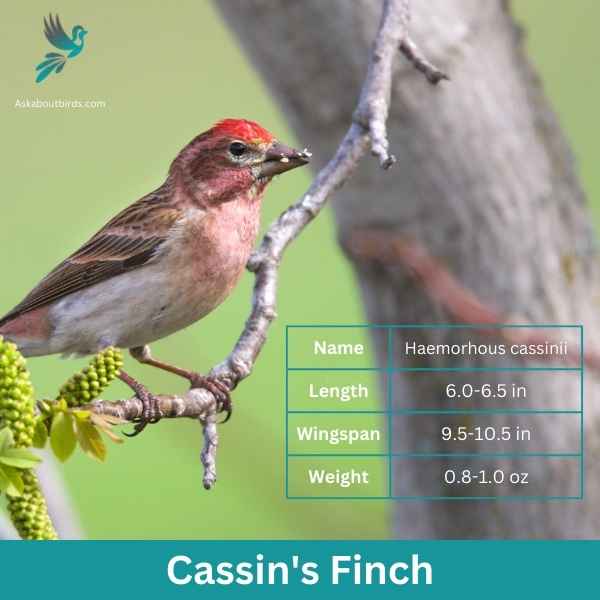
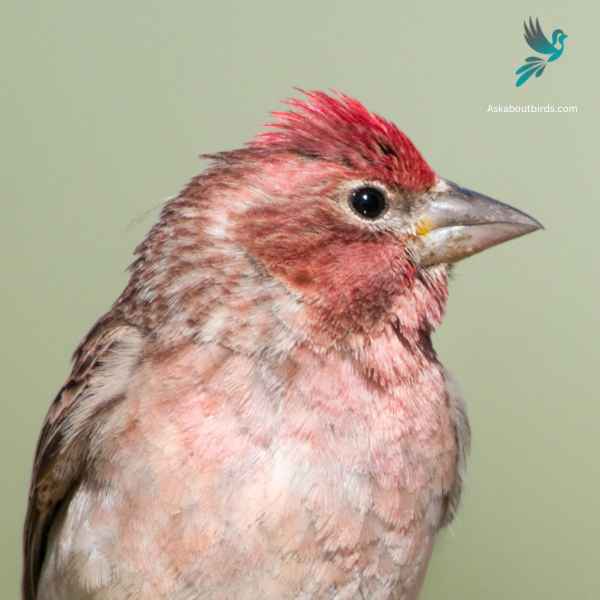
| Feature | Measurement |
|---|---|
| Scientific Name | Haemorhous cassinii |
| Length | 6.0-6.5 in |
| Wingspan | 9.5-10.5 in |
| Weight | 0.8-1.0 oz |
The Cassin’s Finch is a small songbird known for its melodic song and affinity for high-elevation forests.
Appearance: Male Cassin’s Finches are pinkish-red on the crown and throat, contrasting with their streaked brown back and wings. Females lack the bright coloring, appearing streaked brown throughout with a pale eyebrow stripe. Both sexes have a notched tail and a slightly curved bill.
Diet: Cassin’s Finches mainly feed on seeds, particularly from conifers. They also eat insects, especially during the breeding season. Their feeding habits often bring them to bird feeders where they readily eat sunflower seeds.
Reproduction: Cassin’s Finches nest in trees, preferring coniferous forests. The nest is made from twigs, grasses, and feathers. Typically, the female lays 3 to 5 eggs and handles most of the incubation. Both parents partake in feeding the fledglings once they hatch.
Red Crossbill
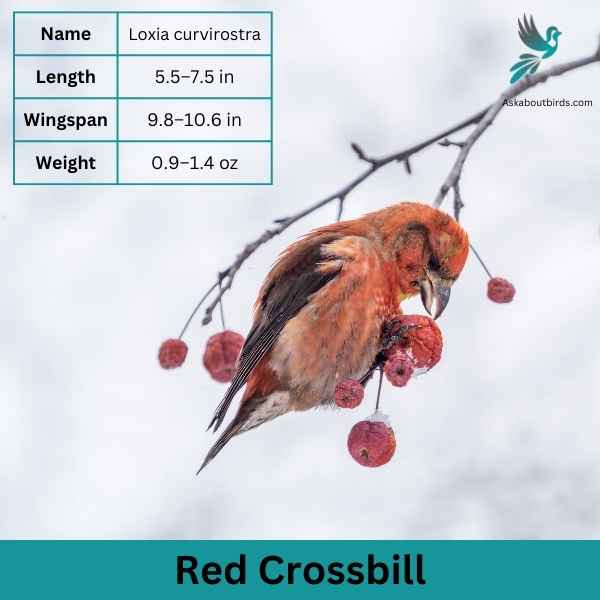
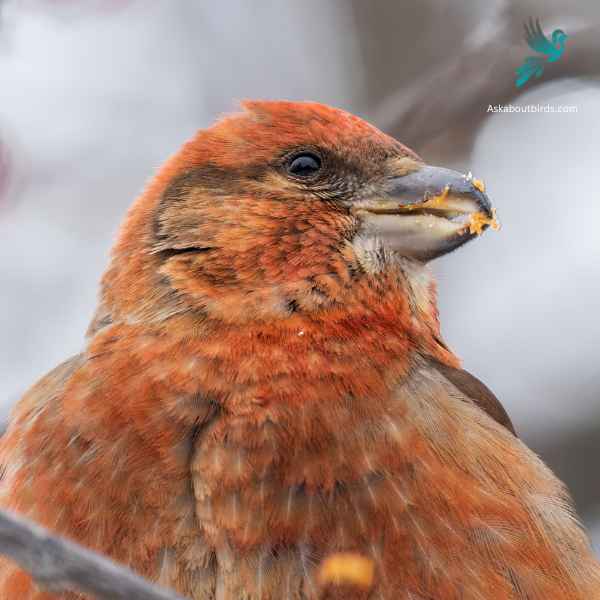
| Feature | Measurement |
|---|---|
| Scientific Name | Loxia curvirostra |
| Length | 5.5–7.5 in |
| Wingspan | 9.8–10.6 in |
| Weight | 0.9–1.4 oz |
The Red Crossbill is a distinctive finch known for its unusual bill, which has evolved to extract seeds from conifer cones.
Appearance: Males are typically bright red or orange, while females are greenish-yellow or olive. Both genders have the characteristic crossed bill, which they use to expertly extract seeds from tightly closed conifer cones.
Diet: Red Crossbills primarily feed on the seeds of coniferous trees, such as spruce, pine, and fir. Their specialized bills allow them to efficiently pry apart conifer cone scales to access the seeds.
Reproduction: Red Crossbills are somewhat nomadic and don’t adhere to a strict breeding schedule. Instead, they breed whenever and wherever food is abundant. Their nests are usually built on horizontal branches of conifer trees.
Rufous Hummingbird
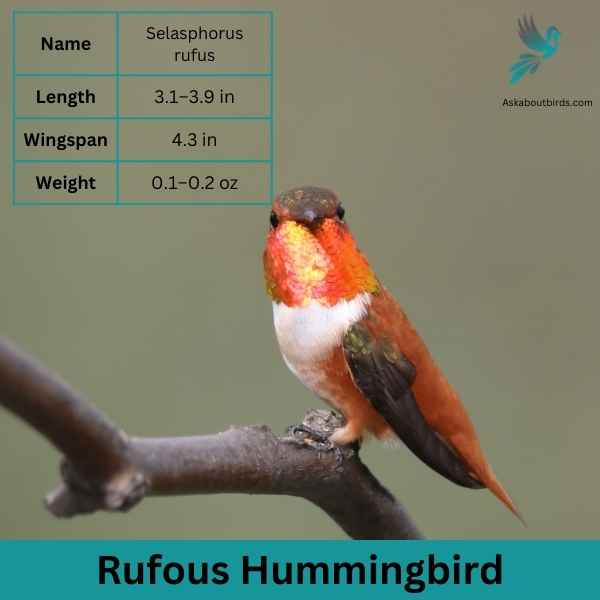
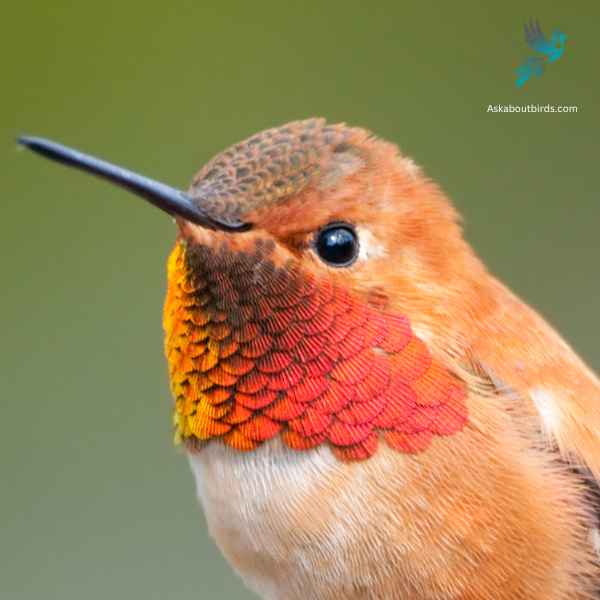
| Feature | Measurement |
|---|---|
| Scientific Name | Selasphorus rufus |
| Length | 3.1–3.9 in |
| Wingspan | 4.3 in |
| Weight | 0.1–0.2 oz |
The Rufous Hummingbird is a small, brilliantly colored bird known for its impressive migratory journeys and feisty behavior.
Appearance: The male Rufous Hummingbird boasts a gleaming orange-red body with a white chest and an iridescent red throat, called a gorget. The female has green upperparts with rufous-washed flanks and tail. Her throat may have some iridescent patches, but it’s generally whitish.
Diet: Like other hummingbirds, the Rufous Hummingbird primarily feeds on nectar from a variety of flowering plants. They also eat insects and spiders for protein, catching them in flight or plucking them from vegetation.
Reproduction: Rufous Hummingbirds nest in trees, shrubs, or even ferns. The female alone selects the site, builds the nest, and cares for the offspring.
Broad-tailed Hummingbird
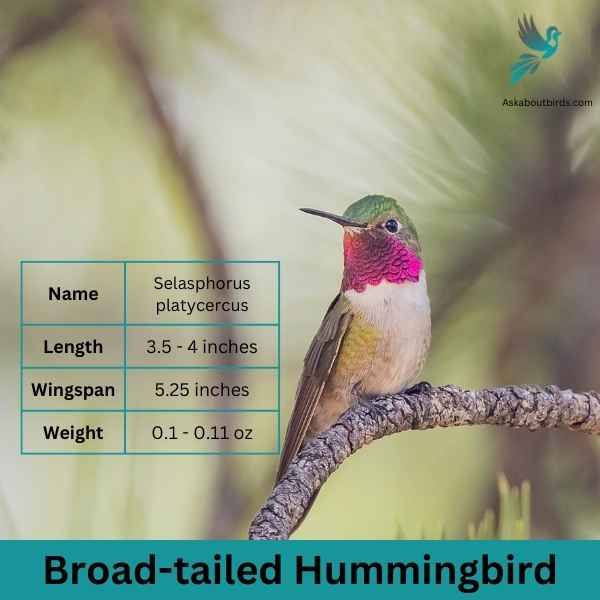
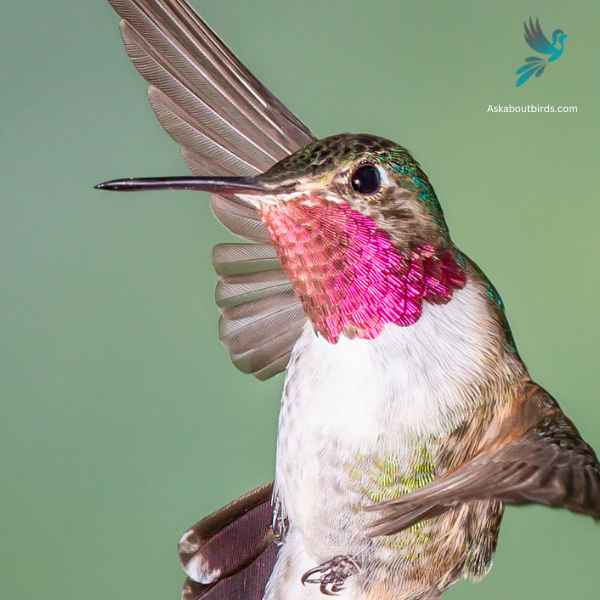
| Feature | Measurement |
|---|---|
| Scientific Name | Selasphorus platycercus |
| Length | 3.5 – 4 inches |
| Wingspan | 5.25 inches |
| Weight | 0.1 – 0.11 oz |
The Broad-tailed Hummingbird is a lively, small bird, identifiable by its iridescent colors and rapid wingbeats, often seen flitting around mountain meadows and gardens.
Appearance: This hummingbird showcases a dazzling green upper body, which in the right light, flashes with brilliant iridescence. Males possess a ruby-red throat, while females exhibit white underparts with green flanks and a white-tipped tail.
Diet: As nectar specialists, Broad-tailed Hummingbirds hover over flowers to sip nectar, acting as pollinators in the process. Additionally, their diet includes small insects and spiders, which provide necessary proteins.
Reproduction: The female is solely responsible for nest construction, which is often secured on a tree branch. This tiny cup-like nest is intricately woven using plant materials and spider webs, then adorned with lichens for camouflage. Inside, she lays typically two white eggs, then incubates and raises the chicks without any assistance from the male.
Pine Grosbeak
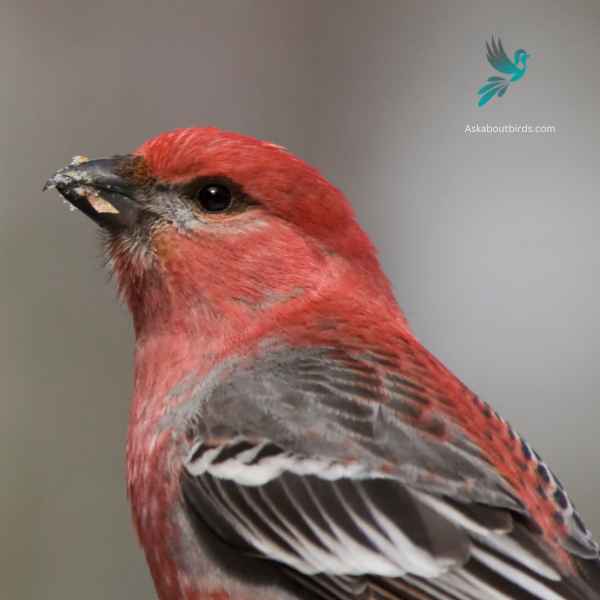
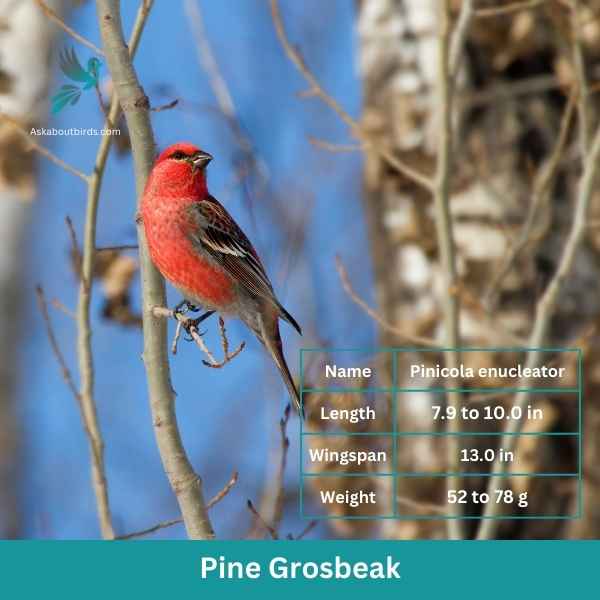
| Feature | Measurement |
|---|---|
| Scientific Name | Pinicola enucleator |
| Length | 7.9 to 10.0 in |
| Wingspan | 13.0 in |
| Weight | 52 to 78 g |
The Pine Grosbeak is a striking bird native to the northern regions of North America, often found in coniferous forests. Both males and females have a plump and robust body with a large beak adapted for eating seeds. The male Pine Grosbeak displays a vibrant reddish-pink plumage, while the female has a more subdued grayish-brown coloration.
These birds are typically seen in small flocks, foraging for food in trees and on the ground. They have a preference for seeds, particularly those from various conifer species. The Pine Grosbeak uses its strong bill to crack open the cones of tall trees and extract the seeds, but they also consume berries and small fruits when available.
Red-naped Sapsucker
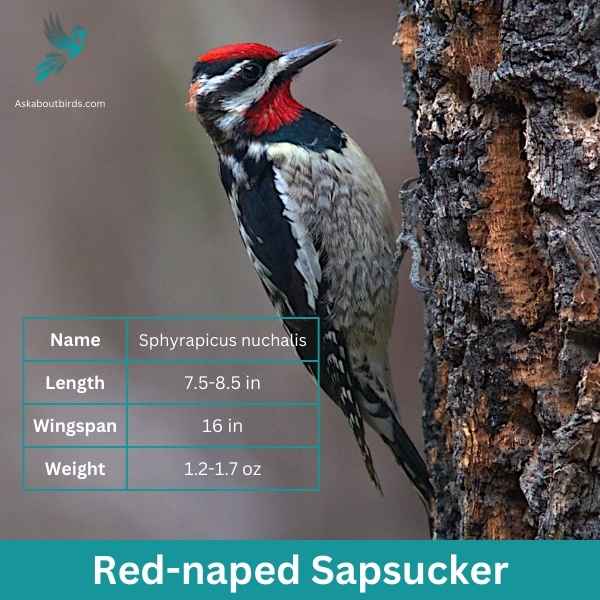

| Feature | Measurement |
|---|---|
| Scientific Name | Sphyrapicus nuchalis |
| Length | 7.5-8.5 in |
| Wingspan | 16 in |
| Weight | 1.2-1.7 oz |
The Red-naped Sapsucker is a medium-sized woodpecker commonly found in forests across the western North America, especially in mixed coniferous woods and aspen groves.
Appearance: This woodpecker is distinguished by its black-and-white barred pattern on the back and wings. A key feature is the bright red patch on the back of the head, which gives the bird its name. Both sexes have a white stripe down the side of the face, though males have a red patch on the throat, whereas females have a white one.
Diet: Red-naped Sapsuckers are named for their habit of drilling rows of shallow holes into tree bark to feed on sap and the insects attracted to it. They also consume ants, beetles, and caterpillars, and will sometimes eat fruits and berries.
Reproduction: These woodpeckers excavate nest cavities in trees, often selecting dead or decaying trees or limbs. After carving out a cavity, the female typically lays a clutch of 4 to 7 eggs. Both parents share responsibilities for incubation and feeding the chicks once they hatch.
Common Redpoll
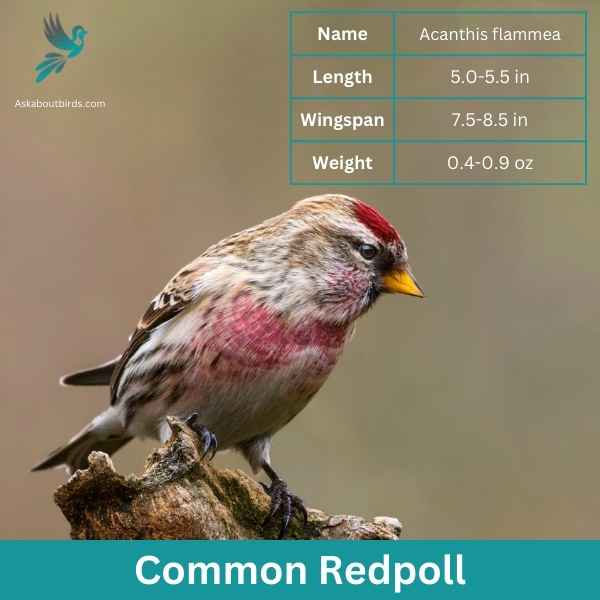
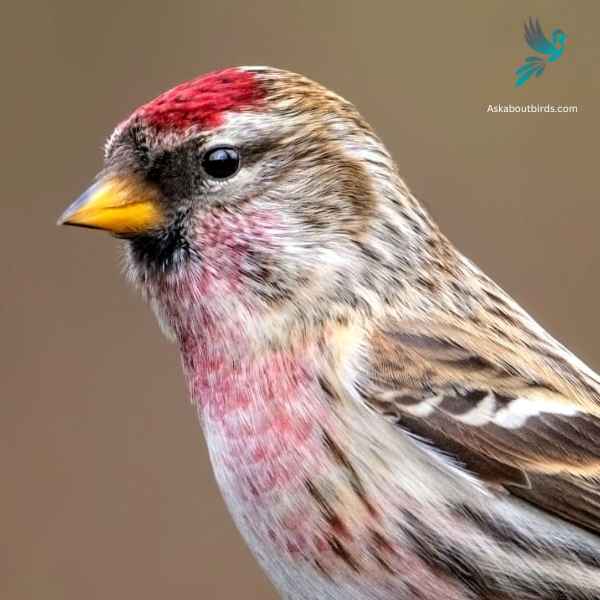
| Feature | Measurement |
|---|---|
| Scientific Name | Acanthis flammea |
| Length | 5.0-5.5 in |
| Wingspan | 7.5-8.5 in |
| Weight | 0.4-0.9 oz |
The Common Redpoll is a small songbird that is easily identifiable by its rosy-red forehead, black chin, and often fluttering flight pattern.
Appearance: Common Redpolls exhibit a distinctive rosy-red forehead patch and black chin. The males typically have a more extensive pink wash on their chest and face than females. The rest of their body is primarily streaked brown and white, with two white wing bars and a notched tail.
Diet: The diet of the Common Redpoll predominantly consists of seeds, particularly from birches and alders. They have a specialized throat pouch where they can temporarily store seeds, allowing them to consume them later in a more sheltered location.
Reproduction: Common Redpolls nest in shrubs or on the ground, using grasses, twigs, and feathers for construction. The female is responsible for the majority of the incubation and typically lays a clutch of 4 to 6 eggs. After the eggs hatch, both parents take part in feeding the young.
Where to Spot Utah’s Red Birds
Utah’s diverse landscapes serve as an avian mosaic, drawing bird enthusiasts from around the world. Here are some of the state’s top birding hotspots:
- Bear River Migratory Bird Refuge: Situated at the northern edge of the Great Salt Lake, this refuge is a crucial stopover for migratory birds. It offers vast wetlands, making it a prime location for viewing waterfowl and shorebirds.
- Antelope Island State Park: As the largest island in the Great Salt Lake, it boasts a unique ecosystem. From its shores to its mountainous backdrop, it’s a haven for diverse bird species, including the striking Red-winged Blackbird.
- Nebo Loop Scenic Byway: This mountainous route in central Utah presents a range of altitudes, offering varied habitats. It’s especially known for sightings of mountain-loving species and vibrant summer songbirds.
- Fish Springs National Wildlife Refuge: Located in the western desert of Utah, this oasis is a magnet for migrating birds. The freshwater springs attract a variety of species, making it a delightful spot for birdwatching.
- Dead Horse Point State Park: Overlooking the Colorado River, this park provides breathtaking views and is home to a variety of desert birds, with the added possibility of spotting raptors soaring on the updrafts.
| State’s Red Birds | Best Spots for Red Birds |
|---|---|
| Arizona’s Red Birds | 1. Ramsey Canyon Preserve 2. Madera Canyon 3. Sedona Wetlands Preserve |
| Colorado’s Red Birds | 1. Rocky Mountain National Park 2. Barr Lake State Park 3. Pawnee National Grassland |
| Idaho’s Red Birds | 1. Camas National Wildlife Refuge 2. Coeur d’Alene’s Hawk Owl Road 3. Bear Lake National Wildlife Refuge |
| Nevada’s Red Birds | 1. Ruby Mountains 2. Ash Meadows National Wildlife Refuge 3. Red Rock Canyon National Conservation Area |
| New Mexico’s Red Birds | 1. Bosque del Apache National Wildlife Refuge 2. Rattlesnake Springs 3. Valle de Oro National Wildlife Refuge |
| Wyoming’s Red Birds | 1. Yellowstone National Park 2. Seedskadee National Wildlife Refuge 3. Bighorn Canyon National Recreation Area |
FAQs on Red Bird Species Found in Utah
What makes the painted bunting one of the standout species in Central and South America?
The painted bunting, commonly found in Central and South America, is often celebrated for its stunning appearance. With bright blue heads, rosy pink head, and bright yellow green body complemented by dark gray wings, this medium-sized bird stands out. Unlike other birds in Utah with brown plumage or dull orange heads, the painted bunting is a spectacle at forest edges and backyard feeders, particularly when they visit large tube feeders for black oil sunflower seeds.
How does the habitat of the purple finch differ from white winged crossbills in the northern and southern states?
Purple finches and white-winged crossbills are distinct in their habitat preferences eastern other birds in Utah and southern states, especially in the northern and southern states. While purple finches, known for their brown coloring and gray wings, prefer forest edges and fruit trees, white winged crossbills, identifiable by their greyish white wings, predominantly inhabit pine trees in the forest canopy. The crossbills are adept at extracting conifer seeds from pine cones, a skill not common to purple finches.
Are Utah’s national forests popular habitats for rare bird species?
Absolutely, Utah’s national forests, like Dixie National Forest and Ashley National Forest, serve as habitats for several rare species of birds breed. These forests offer a rich biodiversity with pine trees, berry bushes, and willow trees that attract both tiny birds and medium-sized bird species. Birds in Utah like male pine grosbeaks, with their red crown, and other accidental or rare species find solace in these serene environments, making the region a birdwatcher’s paradise.
Which birds predominantly feed on black oil sunflower seeds in city parks and backyard feeders?
Black oil sunflower seeds are a popular choice among a variety of birds in Utah visiting city parks and backyard feeders. Birds like the painted bunting, with its vibrant mix of bright blue heads and yellow tail feathers, and the purple finch, distinguishable by its brown plumage, are regular visitors. Additionally, sunflower seed feeders attract other birds with green wings or even those with darker wings, making them a favorite among bird enthusiasts.

